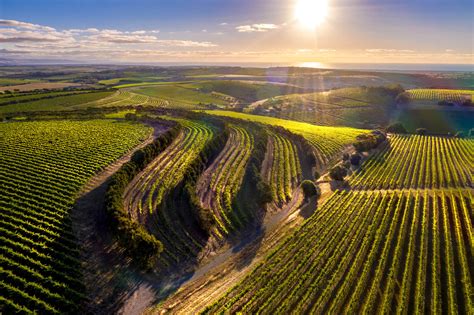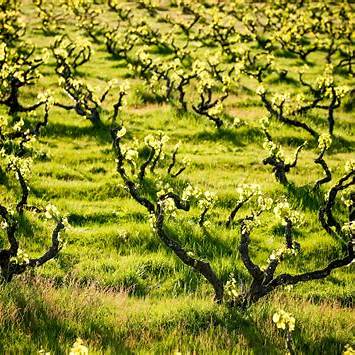How Old Are the Vines in McLaren Vale? Exploring a Living Heritage
The gnarled, twisted trunks of old vines stand as living monuments to McLaren Vale's winemaking history. These venerable plants, some dating back to the 19th century, have not only survived decades of changing climate patterns, evolving viticultural practices, and shifting wine fashions but continue to produce some of Australia's most distinctive and sought-after wines. The age of McLaren Vale's vines represents both a tangible link to the region's past and a key factor in its current wine quality.
McLaren Vale's Viticultural Timeline
To understand the age of McLaren Vale's vines, it's helpful to place them in historical context:
The Pioneering Era (1838-1880)
The first commercial vineyard in McLaren Vale was planted in 1838 by John Reynell, just two years after European settlement in South Australia began. These earliest plantings included Grenache, Shiraz (then called Syrah), and Cabernet Sauvignon, establishing varieties that remain regional signatures today.
The 1850s and 1860s saw significant expansion of vineyard plantings, driven by settlers with European viticultural experience and the growing demand for wine from Adelaide's expanding population. Family names that remain prominent in the region today, including Hardy, Seaview, and Kay, established their first vineyards during this period.
Remarkably, a small number of vines from this pioneering era still survive and produce fruit in McLaren Vale today, primarily Shiraz and Grenache.
The Expansion Era (1880-1920)
The late 19th century brought both challenges and growth for McLaren Vale. While the phylloxera epidemic devastated European vineyards and affected many Australian wine regions, McLaren Vale's geographical isolation and stringent quarantine measures helped it avoid this destructive pest, allowing many original vineyards to survive intact.
This period saw significant expansion of vineyard plantings, particularly of Grenache, which was in demand for fortified wine production—the dominant style of the era. Many of today's old vine treasures date from this expansion era, with plantings from the 1880s through early 1900s still in commercial production.
Modern Development (1920-Present)
The 20th century brought waves of new plantings that reflect changing market demands:
- 1920s-40s: Further plantings of Shiraz, Grenache, and Mataro (Mourvèdre), primarily for fortified wine production
- 1950s-60s: Expansion into table wine varieties as Australian drinking preferences evolved
- 1970s-80s: Significant new plantings of Cabernet Sauvignon and Chardonnay as these varieties gained popularity
- 1990s-2000s: Introduction of Italian and Spanish varieties suited to the region's Mediterranean climate
- 2010s-present: Focus on site-specific plantings based on soil mapping and climate data
Each of these eras has left its mark on our viticultural landscape. Today's McLaren Vale contains this complete timeline of Australian wine history, from pre-phylloxera survivors to the newest climate-adapted varieties.
McLaren Vale's Old Vine Heritage
McLaren Vale is home to some of Australia's oldest producing vines, with several vineyards containing plants over 100 years old. The McLaren Vale Old Vine Register was established in 2018 to document, preserve, and celebrate this living heritage, classifying vines into three categories:
- Old Vines: 35+ years old (planted before 1988)
- Survivor Vines: 70+ years old (planted before 1953)
- Centenarian Vines: 100+ years old (planted before 1923)
These age classifications help communicate the special nature of wines made from historic vineyards. A century-old vine produces wine fundamentally different from one that's ten or twenty years old—typically showing greater concentration, complexity, and sense of place.
The Region's Oldest Vines
McLaren Vale boasts several vineyards with verified pre-1900 plantings that continue to produce commercial wines—an extraordinarily rare resource in global wine terms.
The Oldest Shiraz
McLaren Vale's oldest documented Shiraz vines were planted in 1890 at the Kay Brothers' Block 6 vineyard in Amery. These pre-phylloxera vines, now over 130 years old, continue to produce exceptional fruit for one of Australia's most celebrated single-vineyard wines.
Several other significant 19th-century Shiraz plantings exist throughout the region, including:
- Yangarra Estate's High Sands vineyard (sections planted 1889)
- D'Arenberg's Famous Arm vineyard (1892)
- Chapel Hill's original vineyard (1893)
- Seaview's Old Shiraz Block (1895)
These ancient Shiraz plantings represent a direct viticultural link to the 19th century that few wine regions worldwide can match.
The Oldest Grenache
McLaren Vale is home to some of the world's oldest producing Grenache vines, with the oldest verified plantings dating to 1889.
Within McLaren Vale proper, significant old Grenache plantings include:
- Seaview's Bush Vine Grenache (1889)
- Yangarra's High Sand Grenache (1889)
- D'Arenberg's Blewitt Springs Grenache (1896)
- Oliver's Taranga Grenache (1907)
These ancient dry-grown bush vines have played a central role in the resurgence of premium Grenache in McLaren Vale, producing wines of remarkable intensity and complexity.
The Oldest Cabernet Sauvignon
While McLaren Vale's oldest Cabernet Sauvignon vineyards are younger than its oldest Shiraz and Grenache, the region still boasts some of Australia's most historic plantings of this variety, including:
- Wirra Wirra's original Cabernet block (1929)
- Hardys Tintara Cabernet (1933)
- Chapel Hill Estate Cabernet (1941)
These mature Cabernet vineyards produce wines with a complexity and character distinct from younger plantings, showing the variety's affinity for McLaren Vale's conditions.
What Makes Old Vines Special?
The age of vines in McLaren Vale isn't merely a historical curiosity—it fundamentally affects wine quality and character. Several physiological factors distinguish old vines from their younger counterparts:
Deep Root Systems
Perhaps the most significant difference is below ground. Old vines develop extraordinary root systems that can extend 20 meters or more into the subsoil, accessing deep moisture reserves and mineral resources unavailable to younger vines.
This deep rooting provides multiple benefits:
- Drought resilience – Critical in McLaren Vale's dry climate
- Consistent ripening – Even during challenging vintage conditions
- Terroir expression – Drawing character from multiple soil horizons
- Minimal need for irrigation – Many centenarian blocks remain dry-grown
Natural Yield Control
As vines age, they naturally produce fewer bunches with smaller berries, increasing the skin-to-juice ratio and concentrating flavours without human intervention.
Old vines are self-regulating, A century-old Grenache vine might yield only 1-2kg of fruit compared to 5-6kg from a younger vine, but the resulting wine has incomparable concentration and complexity.
This natural yield control contributes to:
- Greater flavour intensity
- More balanced sugar-to-phenolic ripening
- Enhanced structural elements
- Improved aging potential
Genetic Heritage
Many of McLaren Vale's oldest vineyards were planted before the era of clonal selection, using massal selection techniques where cuttings were taken from the strongest, most suitable vines in a vineyard.
These heritage vineyards often contain greater genetic diversity than modern plantings. A single old vineyard might contain dozens of slightly different expressions of the same variety, creating natural complexity impossible to achieve with uniform clonal material.
Some of McLaren Vale's oldest vineyards also contain pre-phylloxera genetic material no longer available elsewhere, representing an irreplaceable viticultural resource.
The Age Profile of McLaren Vale Today
While McLaren Vale's oldest vines rightfully attract significant attention, they represent just one part of the region's diverse vineyard age profile. According to the McLaren Vale Grape Wine & Tourism Association's vineyard register:
- Centenarian Vines (100+ years): Approximately 2% of total plantings
- Survivor Vines (70-100 years): Around 5% of total plantings
- Old Vines (35-70 years): Approximately 20% of total plantings
- Mature Vines (15-35 years): Around 40% of total plantings
- Young Vines (under 15 years): Approximately 33% of total plantings
This balanced age distribution ensures both the preservation of historic vineyards and the introduction of new plantings that will become the old vines of future generations.
Notable age patterns by variety include:
- Shiraz: The most significant plantings of truly old vines (70+ years), reflecting its long regional history
- Grenache: Contains some of the oldest individual blocks, though smaller in total area than Shiraz
- Cabernet Sauvignon: Mostly mature plantings (15-50 years) with a few historic blocks
- Mediterranean varieties: Generally younger plantings, most under 25 years old
Vine Age and Wine Quality
The relationship between vine age and wine quality in McLaren Vale has been well documented through both anecdotal winemaker observations and formal research projects conducted by the Australian Wine Research Institute.
While old vines don't automatically produce better wines, they do produce distinctively different wines. The character old vines contribute is impossible to replicate through any winemaking technique—it's a quality that comes only with time.
Wine professionals typically observe the following qualities in old vine wines from McLaren Vale:
- Greater mid-palate intensity without increased alcohol levels
- More savoury complexity beyond primary fruit characteristics
- Enhanced textural elements providing structural finesse
- Improved balance between fruit expression and structural elements
- Superior aging potential due to natural concentration and balance
These qualities have made old vine wines from McLaren Vale increasingly sought-after by collectors and connoisseurs worldwide.
Preserving McLaren Vale's Old Vine Heritage
The preservation of McLaren Vale's oldest vines has become a regional priority, with formal initiatives established to ensure these living artifacts survive for future generations:
The McLaren Vale Old Vine Register
Established in 2018, this formal documentation program:
- Verifies and records the age of historic vineyards
- Recognizes growers who maintain old vines despite their lower yields
- Promotes old vine wines to consumers through education and labelling
- Advocates for preservation of significant viticultural heritage
Sustainable Viticultural Practices
Many of McLaren Vale's oldest vineyards are now managed under organic or biodynamic certification, reflecting the understanding that these practices can extend vine longevity by:
- Building healthier soil biology
- Reducing dependence on synthetic inputs
- Promoting vine resilience to climate variations
- Maintaining balanced vine nutrition
Climate Adaptation Strategies
As climate change presents new challenges, vineyard managers have implemented specific strategies to protect old vines:
- Mulching to reduce soil temperature and retain moisture
- Canopy management adaptations to provide fruit shading
- Supplemental irrigation during extreme heat events
- Interplanting of suitable cover crops to protect the soil
Economics of Preservation
The economic sustainability of maintaining low-yielding old vines has been supported through:
- Price premiums for old vine wines reflecting their quality and rarity
- Development of wine tourism focused on old vine experiences
- Regional marketing highlighting old vine heritage as a point of distinction
- Direct-to-consumer programs that capture greater margin for producers
Preserving our oldest vines isn't just about honouring history—it's about protecting a quality factor that can't be replicated any other way. These vines connect us to our past while producing wines that represent the pinnacle of what our region can achieve.
Conclusion: Living History in a Glass
The age of McLaren Vale's vines represents one of the region's most valuable and distinctive assets. From pre-phylloxera survivors planted in the 19th century to carefully maintained mid-century blocks, these living historical artifacts produce wines of remarkable character impossible to replicate from younger plantings.
When you enjoy a wine from one of McLaren Vale's oldest vineyards, you're experiencing not just exceptional quality but a direct connection to the region's pioneering winemakers—a liquid time capsule from plants that have thrived through generations of Australian history.
As you explore McLaren Vale wines, consider seeking out those that specifically mention vine age on their labels or marketing materials. These wines offer not only distinctive quality but also the opportunity to taste a truly irreplaceable aspect of Australia's viticultural heritage.
Explore Our Complete Collection →




Comments (0)
There are no comments for this article. Be the first one to leave a message!